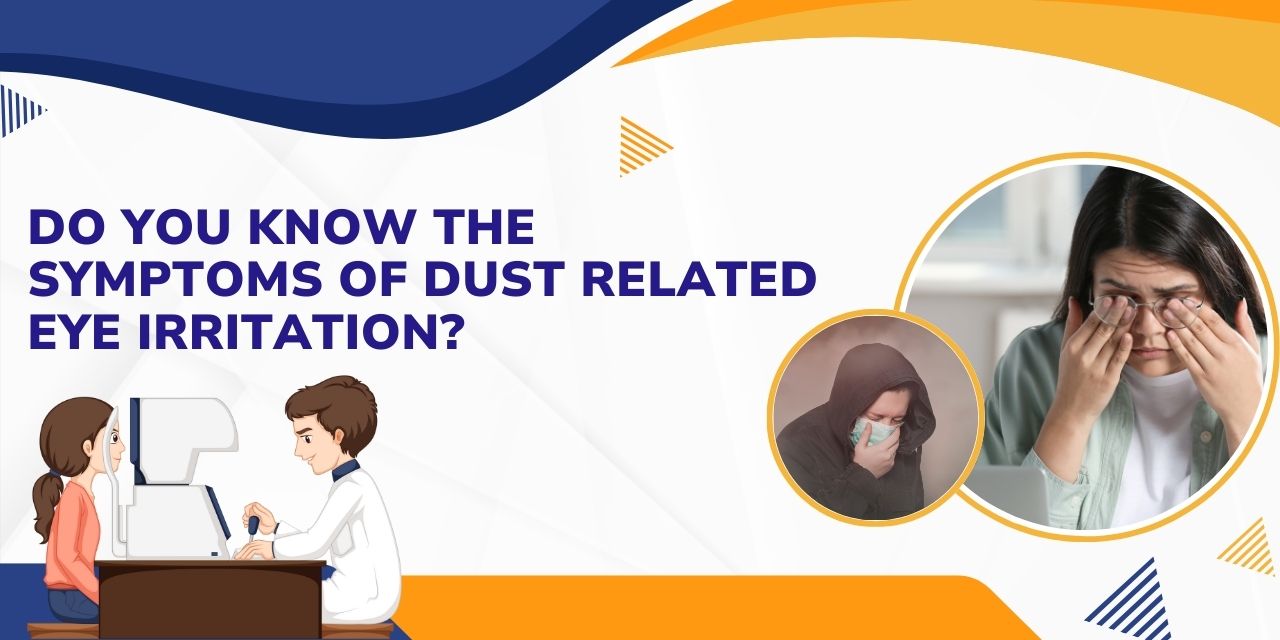Dust is an omnipresent element in our environment, often overlooked in discussions about health and wellness. However, its impact on our eye health and vision can be profound, particularly for those exposed to high levels of dust over prolonged periods. This article explores how dust exposure can affect vision, potential long-term effects, and the importance of preventive measures.
Understanding Dust and Its Composition
Dust is composed of various particles, including soil, pollen, human and animal hair, fabric fibers, and even microscopic organisms like dust mites. When these particles become airborne, they can easily enter our eyes, leading to irritation and discomfort. Understanding the composition of dust is crucial in recognizing how it can impact our health, especially our vision.
Prolonged Exposure and Its Effects
Irritation and Discomfort
One of the immediate effects of dust exposure is eye irritation. Symptoms can include redness, itching, and a burning sensation. When dust particles land on the surface of the eye, they can disrupt the tear film, which is essential for maintaining moisture and comfort. This can lead to a condition known as dry eye syndrome, characterized by a lack of sufficient tears to keep the eyes lubricated.
Dry Eye Syndrome
Dry eye syndrome is not just a temporary discomfort; it can lead to long-term issues if not addressed. Prolonged exposure to dust can exacerbate the condition, causing persistent irritation and inflammation. Over time, the corneal surface can become damaged, leading to more severe visual impairment. Individuals with dry eye syndrome may experience symptoms such as blurry vision, a sensation of grittiness, and increased sensitivity to light.
Allergic Reactions
Dust can also trigger allergic reactions, leading to conditions such as allergic conjunctivitis. This occurs when the immune system overreacts to allergens in dust, resulting in inflammation of the conjunctiva—the thin membrane that covers the eye and eyelid. Symptoms of allergic conjunctivitis include redness, swelling, tearing, and itchiness. If exposure to dust continues, these symptoms can become chronic, further compromising eye health.
Long-Term Vision Impacts
While many people may experience temporary discomfort due to dust exposure, the long-term effects can be more serious. Chronic dry eye syndrome and repeated bouts of conjunctivitis can contribute to lasting changes in eye health and vision.
Corneal Damage
Continuous irritation and inflammation can lead to corneal damage. The cornea is the clear, protective layer at the front of the eye, essential for focusing light onto the retina. Damage to the cornea can result in scarring, which may lead to visual disturbances such as blurred vision or even permanent vision loss.
Increased Risk of Infections
A compromised ocular surface can increase the risk of infections. When the tear film is disrupted, the eyes become more susceptible to pathogens. Conditions like keratitis, an inflammation of the cornea often caused by bacterial or viral infections, can develop, leading to pain and potential vision loss if untreated.
Vision Loss
In severe cases, ongoing dust exposure and resulting eye health issues can culminate in significant vision loss. This underscores the importance of addressing dust exposure and maintaining good eye hygiene, particularly in dusty environments.
Preventive Measures
Preventing the adverse effects of dust on eye health requires a proactive approach. Here are several measures individuals can take to protect their vision:
- Wear Protective Eyewear: Using safety glasses or goggles in dusty environments can help shield the eyes from particles.
- Maintain Clean Environments: Regular cleaning can reduce dust accumulation in homes and workplaces. Utilizing air purifiers can also help filter out airborne particles.
- Practice Good Eye Hygiene: Regularly washing hands and avoiding touching the eyes can help prevent irritation and infection.
- Stay Hydrated: Drinking plenty of water helps maintain overall hydration, including that of the eyes.
- Seek Regular Eye Check-ups: Regular visits to an eye care professional can help monitor eye health and address any issues early.
Conclusion
Dust can significantly impact eye health and vision, particularly with prolonged exposure. From irritation and discomfort to potential long-term effects like dry eye syndrome and conjunctivitis, the implications of dust on our eyes should not be underestimated. It is essential to take preventive measures to protect our eyes from dust and maintain optimal vision.
If you are experiencing persistent eye discomfort or have concerns about dust exposure, consult with an eye specialist. Dr. Rajeev Gupta at Sangam Netralaya, a leading eye hospital in Chandigarh, can provide expert advice and treatment options tailored to your needs. Prioritising eye health is crucial for preserving vision and overall well-being, ensuring that you can see the world clearly and comfortably. To get more information please contact us on : +918725066977.













